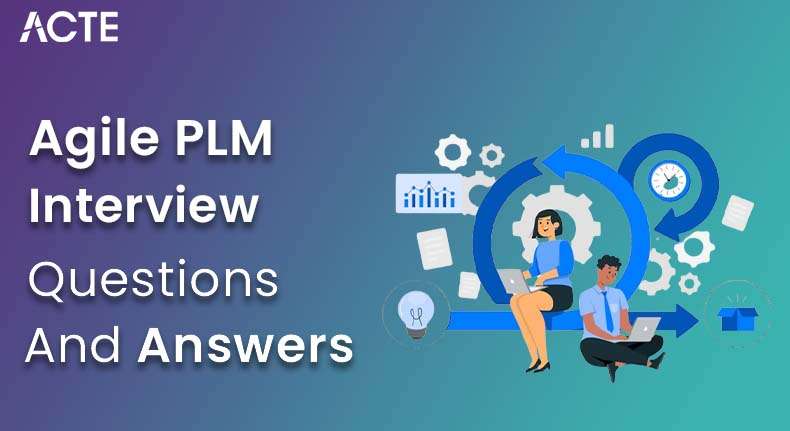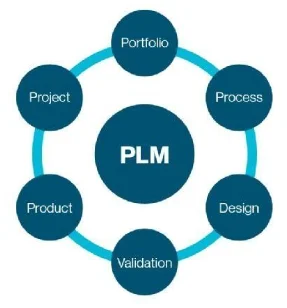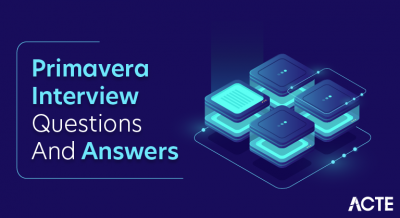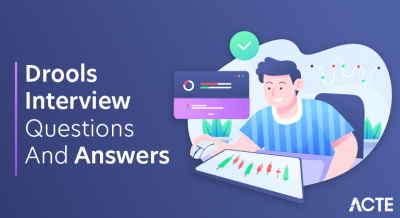
Agile PLM, an acronym for Agile Product Lifecycle Management, revolutionizes product development by emphasizing flexibility and collaboration. It streamlines processes, from conceptualization to release, fostering iterative improvements and rapid adaptation to market dynamics. Through Agile PLM, teams can efficiently manage product data, documents, and processes in a unified platform, promoting transparency and accountability. This approach speeds up time-to-market, boosts product quality, and rapidly adapts to customer needs.
1. What are the benefits of implementing Agile PLM?
Ans:
Implementing Agile PLM offers several benefits, including improved product quality, faster time-to-market, reduced costs, enhanced regulatory compliance, and increased cross-functional collaboration. Agile PLM facilitates efficient communication and coordination among teams across different departments and locations by providing a unified platform for managing product data and processes.
2. What is Agile PLM and what are its key features?
Ans:
Agile PLM (Product Lifecycle Management) is a comprehensive software solution designed to streamline and optimize product development processes from conception to end-of-life. Its key features include:
- Centralized product data management.
- Robust change management capabilities.
- Flexible workflow automation.
- Seamless collaboration tools.

3. What are the different modules available in Agile PLM?
Ans:
Agile Product Lifecycle Management (PLM) typically includes several modules designed to streamline various product development and management aspects. These modules may include Product Collaboration to facilitate communication and collaboration between team members, Product Portfolio Management for strategic planning and decision-making, Quality Management to ensure product quality and regulatory compliance, and Supply Chain Collaboration to manage relationships with suppliers and partners.
4. How does Agile PLM handle version control and revision control?
Ans:
Agile PLM manages version control by assigning unique identifiers to each product version, allowing users to track changes and access historical data. Uses revision control mechanisms to document changes made to product designs or documentation, ensuring transparency and traceability throughout the development lifecycle. Users can view previous revisions, compare changes, and implement controlled updates, ensuring accuracy and consistency in product development and documentation.
5. What is the role of Agile PLM in product data management?
Ans:
- Agile PLM plays a crucial role in product data management by centralizing and organizing information related to a product throughout its lifecycle.
- Acts as a repository for product data, including design specifications, documentation, and change history, ensuring data integrity and availability to all stakeholders.
- Agile PLM facilitates collaboration between cross-functional teams, streamlines processes such as change management and configuration management
6. How does agile PLM support change management processes?
Ans:
Agile PLM supports change management processes by configuring workflows for initiating, reviewing, approving, and implementing changes to product designs, documents, and processes. It ensures proper documentation, impact analysis, and traceability of changes throughout the lifecycle.
7. What workflow options are available in Agile PLM?
Ans:
Agile PLM offers flexible workflow options to manage task progress and approvals throughout the product lifecycle. Users can design customizable workflows tailored to their business processes, including sequential or parallel steps, conditional branches, and automatic alerts. These workflows facilitate effective collaboration, enforce organizational policies, and provide visibility into the status of tasks and approvals, enabling effective product development and change process management.
8. How does Agile PLM differ from traditional PLM systems in its approach and methodology?
Ans:
| Aspect | Agile PLM | Traditional PLM Systems |
|---|---|---|
| Approach | Iterative and adaptive, focusing on incremental development | Sequential or waterfall approach, completing each stage before moving to the next |
| Methodology | Agile methodologies like Scrum or Kanban are commonly used | Often follows traditional project management methodologies |
| Flexibility | Highly flexible, allowing for changes and iterations throughout the lifecycle | Less flexible, with limited scope for changes once a stage is completed |
| Feedback Loops | Emphasizes frequent feedback loops to incorporate changes and improvements | Feedback loops are less frequent and may be limited to specific stages |
| Time-to-Market | Faster time-to-market due to quicker iterations and responsiveness to change | Longer time-to-market due to sequential nature and limited flexibility |
9. What security features are available in Agile PLM?
Ans:
- Role-based access control: Agile PLM enables administrators to define user roles and permissions and grant access to specific functions and data based on job responsibilities and organizational hierarchy.
- Authentication mechanisms: Supports various authentication methods such as username/password, Lightweight Directory Access Protocol (LDAP), or Single Sign-On (SSO) to verify user identity and prevent unauthorized access.
- Data Encryption: Agile PLM uses encryption techniques to secure data in transit and storage, protecting it from interception or unauthorized access.
10. How does Agile PLM address regulatory compliance?
Ans:
- Documentation and Traceability: Agile PLM maintains comprehensive documentation of product specifications, test results, and change history, enabling traceability of product-related information and demonstrating compliance with regulatory requirements.
- Change Management: Provides robust workflows and change management controls to manage modifications to product designs, documentation, or processes in a controlled and auditable manner, ensuring that changes comply with regulatory standards.
- Quality Management: Agile PLM includes quality management functions to enforce quality standards, conduct risk assessments, address non-conformities, and ensure that products meet regulatory requirements for safety, reliability, and performance.
11. How does Agile PLM manage Bills of Materials (BOM)?
Ans:
- Creation and maintenance: Users can create and maintain BOMs within Agile PLM, specifying components, subassemblies, and related information such as part numbers, descriptions, quantities, and relationships.
- Version Control: Agile PLM assigns unique identifiers to BOMs and tracks revisions over time, allowing users to manage changes and view historical versions. This ensures stakeholders have access to the latest approved BOMs and can track changes to specific revisions.
12. What are the different types of reports and analyses available?
Ans:
Product Lifecycle reports track products’ progress through their lifecycle stages and provide insight into milestones, timelines, and bottlenecks. They help stakeholders monitor project status, identify potential delays, and make informed decisions to optimize product development processes.Change Management Reports: Agile PLM generates reports on change management activities such as requests, approvals, and implementation status. These reports make it easy to track change processes, analyze trends, and ensure compliance with change management practices.
13. How does agile PLM support document management and review?
Ans:
Agile PLM supports document management and review through a comprehensive set of features designed to simplify document creation, organization, collaboration, and approval throughout the product lifecycle. Users can upload, store, and categorize documents within the system, providing centralized access and version control. Agile PLM facilitates document review processes by configuring workflows for routing, approving, and checking out documents. Stakeholders can collaborate on documents in real-time, track changes, and provide feedback within the system.
14. What is the process for migrating data to Agile PLM from legacy systems?
Ans:
- Migrating data from legacy systems to agile PLM involves several vital steps to ensure a smooth transition and maintain data integrity.
- First, assessing the existing structure and quality of data in legacy systems is essential to identify any inconsistencies, duplicates, or gaps that need to be addressed.
- Next, a data migration plan outlines the scope, timeline, and resources required for the migration project.
- Data extraction tools are then used to extract data from legacy systems and transform it into a format compatible with the Agile PLM data model.
15. What are the best practices for configuring agile PLM to meet specific business requirements?
Ans:
Configuring agile PLM to meet specific business requirements involves several best practices to ensure optimal functionality, usability, and alignment with organizational goals. First, conducting a thorough analysis of business processes, requirements, and objectives is essential to understand the specific needs that agile PLM should address. This involves engaging stakeholders from different departments to gather insights and identify key issues and priorities.
16. How does Agle PLM support project portfolio management?
Ans:
Agile PLM supports project portfolio management by providing tools and functionality to effectively plan, prioritize, execute, and monitor organizational projects. It allows users to create and manage project portfolios containing multiple projects in line with strategic goals and resource constraints. Agile PLM facilitates portfolio prioritization by evaluating projects based on ROI, resource availability, strategic alignment, and risk assessment criteria.
17. What role does agile PLM play in supplier management and collaboration?
Ans:
- Agile PLM is crucial in supplier management and collaboration. It facilitates effective communication, collaboration, and coordination with suppliers throughout the product lifecycle.
- It provides a centralized platform for managing supplier information, contracts, and performance metrics, enabling organizations to evaluate, select, and integrate suppliers based on predefined quality, cost, and reliability criteria.
18. How does Agile PLM handle product quality management?
Ans:
In product quality management, Agile PLM facilitates identifying, assessing, and resolving quality issues through capabilities such as nonconformance management, corrective and preventive actions (CAPA), quality audits, and continuous improvement initiatives. It ensures that products meet quality standards, regulatory requirements, and customer expectations, enhancing overall product quality and customer satisfaction.
19. What problems do we usually encounter during the implementation of agile PLM, and how can they be solved?
Ans:
- Resistance to change from employees accustomed to traditional processes.
- Complexity of integration with existing systems.
- Problems migrating data from legacy systems.
- Ensuring user adoption and training.
- Aligning agile PLM with unique business processes.
- Managing stakeholder expectations.
- Portfolio data centralization and strategy alignment.
20. How does agile PLM support multi-site and global operations?
Ans:
- Centralized storage is accessible from multiple locations.
- Role-based access control for distributed teams.
- Multilingual support.
- Collaboration tools for remote teams.
- Version control to track changes to websites.
- Integration with enterprise systems for real-time data sharing.
21. What are the possibilities for integrating Agile PLM with CAD software?
Ans:
Two-way data exchange between Agile PLM and CAD tools.Integration with common CAD platforms such as AutoCAD, SolidWorks, etc.Automated import/export of CAD files and metadata.Linking CAD files to product records in Agile PLM.Ensuring consistency and synchronization of data between CAD and PLM systems.
22. What are the key considerations when adapting agile PLM to suit unique business processes?
Ans:
- Thorough understanding of business requirements and processes.
- Configure workflows, fields, and user interfaces to meet specific needs.
- Extensibility of agile PLM through custom fields, forms, and scripts.
- Conducting thorough testing and user acceptance to verify customization.
- Documenting customizations for future use and maintenance.
23. How does Agile PLM facilitate the traceability and auditability of product data?
Ans:
Implementation of version control and revision control.Maintaining a comprehensive audit trail of changes.Tracking relationships between product components and documents.Enforcing data integrity and security measures.Generation of audit reports and compliance documentation.
24. What role does Agile PLM play in new product introduction (NPI) processes?
Ans:
- Manage project timelines, tasks, and deliverables.
- Centralization of product data and documentation.
- Streamlining collaboration between cross-functional teams.
- Facilitating the review, approval, and release processes of proposals.
- Ensuring compliance with regulatory requirements.
- Track NPI progress and performance metrics.
25. What are the possibilities of extending the functionality of Agile PLM with customization or third-party plugins?
Ans:
- Development of custom plugins or extensions.
- Integration with third-party software solutions.
- API usage for seamless data exchange.
- Customization of workflows, forms, and reports.
- Improvements to user interfaces and dashboards.
- Collaboration with the Agile PLM community and partners for additional features.
26. How does Agile PLM handle Engineering Change Orders (ECOs) and Deviations?
Ans:
Initialize change requests through configurable workflows.Impact analysis to assess the effects of proposed changes.Review and approval processes involving relevant stakeholders.Implementation of approved changes with proper documentation.Track and audit changes throughout the lifecycle.Ensuring compliance with change management policies and regulations.
27. How does Agile PLM contribute to managing product portfolios and product roadmaps?
Ans:
- Defining product hierarchies and relationships.
- Prioritization and optimization of product investments.
- Visualization of product plans and timelines.
- Monitor portfolio performance and KPIs.
- Aligning portfolios with business goals and market trends.
28. What are agile PLM deployment options (cloud, on-premise, hybrid)?
Ans:
- On-premise deployment for complete control and customization.
- Cloud deployment for scalability and flexibility.
- Hybrid deployment for a combination of on-premise and cloud services.
- Considerations include security, compliance, cost, and IT infrastructure capabilities.
29. How does Agile PLM support product documentation management throughout the lifecycle?
Ans:
A centralized repository for storing all product-related documents.Version control to track document revisions and changes.Access control ensures that only authorized users can view or edit documents.Workflow automation for document review, approval, and release processes.Integration with document authoring tools for seamless document creation and updates.Traceability to link documents to product and lifecycle stage.
30. What is the process for implementing Agile PLM in a regulated industry such as healthcare or aviation?
Ans:
Conducting thorough compliance assessments.Adapting agile workflows and PLM processes to comply with regulatory requirements.Implementing document review and change management processes to ensure compliance.Providing training and support to users on regulatory guidelines and procedures.Implementation of audit trails and reporting capabilities to demonstrate compliance.
31. What are the scalability considerations for agile PLM as the organization grows?
Ans:
- Evaluating hardware and infrastructure requirements to support growing data volumes and user load.
- Implementation of scalable architecture and database configurations.
- Considering cloud solutions for elasticity and scalability.
- Monitoring system performance and performing regular scalability assessments.
- Planning to expand the user base and features in future phases.
32. How does agile PLM support lean and agile methodologies in product development?
Ans:
Agile PLM provides the flexibility to adapt to changing requirements and priorities. Agile PLM supports iterative development cycles, allowing for incremental improvements and feedback loops. Agile PLM facilitates collaboration and communication between cross-functional teams, essential for agile development. Agile PLM workflow automation streamlines processes, shorten delivery times, and increases efficiency. Agile PLM enables an overview of the status and progress of the project in real time and supports agile decision-making.
33. How does Agile PLM assist in risk management for product development projects?
Ans:
- Agile PLM facilitates risk identification and assessment through comprehensive data management and analysis.
- Tracks changes and variances, allowing teams to assess potential impacts on project schedules and quality.
- Agile PLM enables proactive risk mitigation strategies through automated workflows and alerts.
- Provides traceability to identify root causes of problems and implement corrective actions.
- Agile PLM supports compliance with regulatory requirements related to risk management.
34. What are the different user roles and permissions available in Agile PLM?
Ans:
- Administrator: Full access to configure system settings and manage user permissions.
- Advanced User: Access to most system functions, including data entry, report creation, and workflow management.
- Analyst: Limited access is available for data analysis and reporting purposes.
- Browser: Read-only access to view product data and documents.
- Contributor: Limited access to data entry and document creation.
- External user: Limited access for suppliers or partners collaborating on specific projects.
35. How does Agile PLM handle product design validation and verification?
Ans:
Agile PLM provides tools to define validation and verification requirements for product designs.Facilitates documentation of test protocols, results, and compliance with standards.Agile PLM supports traceability and links design requirements to test cases and results.Enables collaboration between design, engineering, and test teams during verification.Agile PLM provides visibility into validation status and performance monitoring metrics.
36. Describe the process of configuring workflows in Agile PLM?
Ans:
Agile PLM provides tools to define validation and verification requirements for product designs.Facilitates documentation of test protocols, results, and compliance with standards.Agile PLM supports traceability and links design requirements to test cases and results.Enables collaboration between design, engineering, and test teams during verification.Agile PLM provides visibility into validation status and performance monitoring metrics.
37. What are the Key Performance Indicators (KPIs) that can be tracked with Agile PLM?
Ans:
- Identify and document current business processes and workflows.
- Define workflow stages, transitions, and decision points.
- Configure roles, permissions, and notifications for each workflow step.
- Test and validate workflows to ensure they meet business requirements.
- Train users on new workflows and processes.
- Continuously monitor and refine workflows based on user feedback and process improvements.
38. How does Agile PLM support product variant and configuration management?
Ans:
- Agile PLM supports the definition and management of product configurations and variants.
- Allows creation of configurable BOMs for different product options.
- Agile PLM makes tracking requirements, documents, and variant-specific changes easy.
- It overviews the relationship between the essential products and their variants.
- Agile PLM supports configuration management to ensure consistency and accuracy across product variants.
39. How does Agile PLM handle Engineering Change Requests (ECRs)?
Ans:
Agile PLM manages ECR through configurable workflows that facilitate the initiation, review, approval, and implementation of technical changes. Users can submit ECR reports detailing proposed changes and justifications, which relevant stakeholders will evaluate. The system ensures that all stages of the ECR process are documented and tracked, providing transparency and accountability. Automated notifications and reminders help keep all parties informed and engaged throughout the ECR lifecycle.
40. What are the options for integrating Agile PLM with external data exchange systems?
Ans:
Agile PLM offers various integration options to facilitate data exchange. This includes leveraging APIs (Application Programming Interfaces) for real-time data synchronization, implementing batch data import/export using standard formats such as XML or CSV, and leveraging middleware solutions for seamless integration between Agile PLM and other enterprise systems. Additionally, it supports integration with third-party applications and services, allowing for enhanced functionality and data interoperability.
41. How does Agile PLM ensure data integrity and consistency across modules?
Ans:
Agile PLM maintains data integrity and consistency across modules through robust data management mechanisms. This includes enforcing data validation rules, providing referential integrity between related entities, and implementing transactional controls to maintain data consistency during operations such as updates or deletes. Additionally, it features real-time data synchronization across different modules, ensuring that all changes are reflected immediately throughout the system.
42. What role does Agile PLM play in supply chain management?
Ans:
- Role of Agile PLM in Supply Chain Management: Agile PLM plays a crucial role in supply chain management by providing visibility, collaboration, and control over product-related information and processes.
- It also facilitates communication and collaboration between internal teams and external partners such as suppliers, contract manufacturers, and distributors.
43. What are the options for customizing reports and dashboards in Agile PLM?
Ans:
Agile PLM offers the flexibility to customize reports and dashboards to meet specific business requirements. Users can create custom reports using built-in reporting tools or third-party reporting solutions using various available data fields and parameters. Additionally, it provides options for scheduling and automating report generation, ensuring that stakeholders receive timely and relevant information. Custom dashboards can be tailored to display key performance indicators (KPIs) and metrics that are critical for informed decision-making.
44. How does Agile PLM support product testing and validation management?
Ans:
Agile PLM supports product testing and validation processes by providing tools for defining test plans, managing test cases, recording test results, and tracking defects. It facilitates collaboration between development, quality assurance, and test teams and ensures project requirements and standards compliance. This integration streamlines communication and documentation throughout the testing lifecycle, helping to identify and resolve issues efficiently.
45. What is the process for implementing Agile PLM for a new product line?
Ans:
Implementing Agile PLM for a new product line involves several steps, including defining product structures and attributes, configuring workflows for design, change management, and approval, importing existing product data, and setting up user roles and permissions. Additionally, it is essential to conduct comprehensive training for users to ensure they understand the system’s features and functionalities. This preparation helps to smooth the transition and maximize the effectiveness of the PLM system in managing the new product line.
46. What tools and techniques are available to migrate data to Agile PLM?
Ans:
- Agile PLM offers a variety of data migration tools and techniques, including data extraction tools, data mapping and transformation scripts, and bulk data import/export capabilities.
- Organizations can use data migration services provided by Oracle or third-party vendors using predefined templates and methodologies for efficient data migration
47. How does Agile PLM handle configuration management for complex products?
Ans:
Agile PLM manages complex product configuration through configurable BOM structures, variant management capabilities, and rule-based configuration modules. It enables organizations to define product variants, options, and rules governing their build, ensuring consistency and accuracy across different configurations. The system also supports dynamic updates to configurations based on changing requirements or market conditions, allowing for more agile and responsive product management.
48. How does Agile PLM facilitate design reviews and approvals?
Ans:
Agile PLM facilitates design reviews and approvals through configurable workflows that manage the review process, assign tasks to appropriate stakeholders, and track progress. It provides collaboration tools for sharing design documents, annotations, and feedback between reviewers. The system also integrates with version control systems to ensure that all team members are working with the most current design iterations and documentation.
49. What are the options for user training on Agile PLM?
Ans:
Agile PLM user training includes providing comprehensive training materials, conducting hands-on workshops, and offering online tutorials and documentation. Organizations can develop customized training programs tailored to user roles and skill levels, covering system navigation, data entry, workflow management, and report creation. Additionally, ongoing support and refresher courses can be offered to ensure users remain proficient and up-to-date with any system updates or new features.
50. How does Agile PLM handle the transfer of product data between different lifecycle stages?
Ans:
- Manage the transfer of product data between lifecycle stages: Agile PLM manages the transfer of product data between different lifecycle stages through configurable workflows and data migration processes.
- It ensures that product data is verified, reviewed, and approved before moving to the next stage.
- Agile PLM also maintains traceability and auditability of data transfers, enabling stakeholders to track product development throughout the lifecycle and ensuring compliance with regulatory requirements.
51. How does Agile PLM support compliance with industry standards and regulations?
Ans:
- Supporting compliance with industry standards and regulations: Agile PLM supports compliance with industry standards and regulations by providing tools to document, manage, and enforce regulatory requirements throughout the product lifecycle.
- It enables organizations to define compliance criteria, track regulatory changes, and ensure compliance with standards such as ISO, FDA, or EU regulations. Agile PLM also facilitates audit preparation
52. What are the considerations for maintaining data consistency when integrating agile PLM with other systems?
Ans:
When integrating agile PLM with other systems, organizations must consider data mapping, transformation, and validation processes to ensure data consistency and accuracy across platforms. To maintain data integrity during integration, it is essential to establish data governance policies, data quality controls, and data synchronization mechanisms.
53. How does Agile PLM handle product obsolescence and end-of-life management?
Ans:
Agile PLM manages product obsolescence and end-of-life (EOL) processes through configurable workflows and lifecycle management capabilities. It enables organizations to define EOL criteria, assess the impact of end-of-production, and manage the stock-out and disposal process. Additionally, it provides tools for communicating EOL decisions to stakeholders and ensuring compliance with regulatory requirements.
54. Can you describe the change validation process in Agile PLM?
Ans:
- Agile PLM change validation involves verifying that proposed changes meet established requirements, conform to regulatory standards, and do not adversely affect product quality or performance.
- It also consists of performing impact assessment, risk analysis, and testing activities to evaluate the consequences of changes on the product’s functionality, safety, and reliability.
55. What are the options for automating routine tasks in Agile PLM?
Ans:
Agile PLM offers automation capabilities through configurable workflows, scripting, and integration with third-party automation tools. Organizations can automate tasks such as data entry, document approval, change notifications, and report generation, increasing efficiency and reducing manual effort. Furthermore, these automation features help ensure consistency and accuracy across processes, enhancing overall productivity and reducing the likelihood of errors.
56. How does Agile PLM support product documentation revision management?
Ans:
Agile PLM provides robust product documentation revision management support by offering a centralized repository for all product-related documents. Agile PLM tracks document revisions within this repository and ensures that each version is easily identifiable and accessible. Additionally, it supports version control and audit trails, allowing users to view historical changes, revert to previous versions if needed, and maintain a comprehensive history of document modifications.
57. What role does Agile PLM play in managing product recalls and security issues?
Ans:
In managing product recalls and security issues, Agile PLM is essential to ensure quick and effective responses to mitigate risks and protect consumers. In the event of a product recall, Agile PLM provides functionality to quickly identify affected products by tracking their components, suppliers, and manufacturing processes. It also facilitates communication with stakeholders and provides tools for documenting recall actions, monitoring progress, and ensuring that corrective measures are implemented and documented effectively.
58. What are the disaster recovery and backup options in agile PLM?
Ans:
Regarding disaster recovery and backup options, Agile PLM offers various solutions to protect data integrity and ensure business continuity during unexpected incidents. One option is to implement regular backups of Agile PLM databases and repositories through built-in backup utilities or third-party backup solutions. Additionally, Agile PLM supports the creation of redundant systems and failover mechanisms to minimize downtime and ensure that critical operations can continue smoothly in the event of a system failure or disaster.
59. How does Agile PLM handle data synchronization between instances or environments?
Ans:
- Agile PLM offers built-in data replication and synchronization capabilities.
- Organizations can configure data synchronization schedules and rules.
- Changes made in one instance are automatically propagated to other cases.
- Version control mechanisms ensure consistency and traceability of synchronized data.
60. How does Agile PLM facilitate cross-functional collaboration during product development?
Ans:
- Agile PLM provides collaboration tools like discussion forums, comments, and alerts.
- Cross-functional teams can access and update product data in real time.
- Configurable workflows facilitate communication and coordination between team members.
- Role-based access controls ensure that the appropriate stakeholders have access to the necessary information.
61. What are the options for customizing user interfaces in Agile PLM?
Ans:
- Agile PLM offers customization options through user interface configuration settings.
- Users can customize dashboards, views, and layouts according to their preferences.
- Custom fields, forms, and labels can be added or modified to meet business needs.
- Organizations can develop their plugins or extensions to enhance the user experience further.
62. How does Agile PLM support product cost and price management?
Ans:
Agile PLM supports the tracking and analysis of product costs throughout the lifecycle.Cost data can be associated with product structures, BOMs, and manufacturing processes.Pricing information can be linked to product records and adjusted based on cost changes.Integration with ERP systems enables real-time cost and price updates.
63. What is the process for performing audits in Agile PLM?
Ans:
Organizations define audit criteria and scope within Agile PLM. Auditors have access to relevant product data and documentation through the system. Audit records and history logs provide an overview of changes and actions taken. Nonconformances identified during audits trigger corrective action workflows, ensuring that issues are addressed and resolved promptly. Additionally, Agile PLM’s comprehensive reporting tools enable detailed audit analysis and tracking of audit outcomes to support continuous improvement efforts.
64. What are the possibilities for extending the functionality of agile PLM through APIs and integration frameworks?
Ans:
- Agile PLM offers an API for integration with external systems and custom applications.
- Integration frameworks such as Oracle Fusion Middleware enable seamless connectivity.
- Organizations can develop custom integrations to extend agile PLM functionality.
- Third-party plugins and connectors provide additional integration options.
65. How does Agile PLM handle product specification and requirements management?
Ans:
- Agile PLM captures and manages product specifications and requirements within configurable data structures.
- Requirements are linked to product designs, features, and test cases.
- Requirement changes trigger workflow processes for review and approval.
- Traceability ensures alignment between requirements and product development activities.
66. Can you discuss the role of Agile PLM in managing intellectual property rights for product designs?
Ans:
Agile PLM tracks intellectual property rights related to product designs, patents, and copyrights.Access control limits unauthorized access to sensitive design information.Digital rights management features protect intellectual property from unauthorized use or distribution.Document management capabilities ensure proper handling and protection of design documents.
67. What are the possibilities of integrating agile PLM with project management tools?
Ans:
- Agile PLM integrates with project management tools like Microsoft Project, Jira, or Trello.
- The integration enables the synchronization of project plans, tasks, and milestones.
- Project updates in external tools are reflected in Agile PLM, ensuring alignment between project and product development activities.
- Collaboration features facilitate communication and coordination between project and product teams.
68. How does Agile PLM support product documentation approval management?
Ans:
- Agile PLM automates document approval workflows based on predefined rules and roles.
- Document owners initiate approval requests within the system.
- Approvers receive notifications and review documents online.
- Audit records record the history of document approvals and status changes.
- Approved documents are automatically updated in the system, ensuring version control and traceability.
69. How does Agile PLM handle the transfer of product data between different systems and formats?
Ans:
- Agile PLM manages the transfer of product data between different systems and formats through its robust integration capabilities.
- It provides flexible integration options such as APIs, middleware solutions, and data mapping tools to facilitate seamless communication and synchronization.
- Agile PLM plays a vital role in these areas by providing identification, tracking, and resolution tools.
70. What are the options for configuring notifications and alerts in Agile PLM?
Ans:
Agile PLM offers extensive options for configuring notifications and alerts to keep stakeholders informed of critical events and changes. Users can define notification rules based on specific triggers, such as workflow transitions, document approvals, or milestone completions. Notifications can be customized to include detailed information and sent through various channels like email or in-system alerts, ensuring timely communication and prompt action.
71. How does Agile PLM support product configuration management for different markets and regions?
Ans:
Agile PLM supports managing product configurations for different markets and regions by enabling organizations to define variant-specific attributes, rules, and relationships. Organizations can create configurable Bills of Materials and specifications to accommodate variations in product features, capabilities, and regulatory requirements in different markets
72. What is the process for performing impact analysis in Agile PLM?
Ans:
In Agile PLM, impact analysis involves evaluating the effects of proposed changes on product development processes, schedules, and outcomes. Organizations can analyze impact by assessing dependencies and relationships between various product components, documents, and stakeholders. This analysis helps in understanding potential risks and mitigating them by adjusting plans and resources accordingly to ensure smooth project execution and alignment with objectives.
73. What are the options for customizing product workflows in Agile PLM?
Ans:
Agile PLM offers extensive customization options to configure product workflows to align with organizational processes and requirements. Organizations can define workflow stages, transitions, and approval steps based on specific business rules and goals. Additionally, custom workflows can be tailored to accommodate unique project needs, integrate with existing systems, and ensure that processes are efficiently managed and compliant with internal standards.
74. How does Agile PLM support the management of product lifecycle milestones and gates?
Ans:
- Agile PLM supports product lifecycle milestones and gates management by providing tools to define, track, and manage critical milestones and decision points throughout the product lifecycle.
- Organizations can create predefined checkpoints, criteria, and approval processes to ensure products meet predefined quality standards and business objectives before moving to the next stage.
75. How does Agile PLM manage product variants and options?
Ans:
Agile PLM makes managing product variants and options easy by providing tools to define variant-specific attributes, configurations, and relationships. Organizations can create configurable BOMs and specifications to accommodate different product configurations, options, and features. Additionally, Agile PLM supports version control and change management for variants, ensuring that all product configurations are accurately documented and maintained throughout their lifecycle.
76. What are the options for configuring access control and permissions in Agile PLM?
Ans:
- Agile PLM offers flexible access control configuration options and permissions to regulate user access to sensitive data and product features.
- Organizations can define user roles, groups, and permissions based on job duties, security requirements, and compliance credentials.
- Agile PLM enables organizations to assign granular object-level permissions and control access to documents, BOMs, workflows, and other system components.
77. How does Agile PLM handle product packaging and labeling management?
Ans:
Agile PLM supports product packaging and labeling management by providing tools to define packaging requirements, specifications, and artwork. Organizations can create BOMs and packaging specifications to document packaging components, materials, and instructions. Furthermore, Agile PLM enables version control for packaging designs and labels, ensuring that any updates or changes are systematically tracked and that the most current versions are used throughout the production process.
78. How does Agile PLM support product recall management and corrective actions?
Ans:
Agile PLM is critical in managing product recalls and corrective actions by providing a structured framework for identifying, tracking, and resolving product quality or safety issues. In the event of a recall, Agile PLM enables organizations to quickly assess the scope and impact of the problem by tracking affected products, components, and suppliers.
79. What are the possibilities of integrating agile PLM with enterprise resource planning (ERP) systems?
Ans:
Agile PLM integrates data management and real-time communication tools to facilitate cross-functional cooperation. Because of its iterative methodology, it can quickly adjust to changing market conditions and requirements, increasing efficiency and reducing time-to-market. Agile PLM accelerates product delivery and increases productivity by promoting alignment and openness.
80. What are the possibilities of integrating agile PLM with enterprise resource planning (ERP) systems?
Ans:
- Integrating agile PLM with enterprise resource planning (ERP) systems offers several options for streamlining business processes and increasing data visibility across the organization.
- The integration enables seamless data exchange between Agile PLM and ERP systems, making synchronizing product information, bills of materials (BOMs), inventory levels, and production schedules easy.
- This integration optimizes supply chain management, sourcing, production planning, and financial processes by ensuring data consistency and accuracy between Agile PLM and ERP systems. It also enables accurate-
81. How does Agile PLM support the management of product configurations and feature sets?
Ans:
- Agile PLM supports the management of product configurations and feature sets by providing tools to define, configure, and maintain product variants and options.
- Organizations can define configurable BOMs and product structures to accommodate different configurations based on customer or market requirements.
- Agile PLM also offers rule-based configuration management capabilities that allow organizations to define logical constraints and dependencies between product features and capabilities.
82. What is the process for performing an impact assessment in Agile PLM?
Ans:
In Agile PLM, an impact assessment evaluates the potential consequences of proposed product design, document, or process changes. This process typically involves identifying stakeholders, assessing the scope and magnitude of proposed changes, analyzing potential risks and benefits, and determining implications for project schedules, costs, and resources.
83. What are the options for customizing reports and dashboards in Agile PLM?
Ans:
Customizing reports and dashboards in Agile PLM allows organizations to present information according to specific business requirements and user preferences. Agile PLM provides several customization options, including defining custom data fields, creating user-defined reports, and configuring personalized dashboards. Additionally, users can incorporate various visualizations and metrics to enhance data interpretation and decision-making, tailoring the interface to highlight key performance indicators and relevant insights.
84. How does Agile PLM support product documentation and specification management?
Ans:
Agile PLM supports product documentation and specification management by providing a centralized repository for storing and managing product-related documents, specifications, and requirements. Organizations can create, review, and approve documents within Agile PLM, ensuring version control, document traceability, and compliance with regulatory standards.
85. How does Agile PLM manage product lifecycle milestones and gates?
Ans:
- Agile PLM plays a crucial role in managing product lifecycle milestones and gates by providing a structured framework for defining, tracking, and managing key stages and decision points throughout the product lifecycle.
- Organizations can define milestone criteria, approval processes, and gate checks within Agile PLM to ensure compliance with project goals and regulatory requirements.
86. What are the options for configuring workflows and approval processes in Agile PLM?
Ans:
- In Agile PLM, workflows and approval processes can be configured using pre-built templates or customized to fit specific needs.
- Administrators define state transitions, conditions, and rules to automate decision-making. Notifications and alerts keep stakeholders informed, while parallel approval paths streamline complex processes.
- Escalation rules ensure timely resolution, and audit trails provide visibility and compliance. Integration with other systems and role-based access control further enhance efficiency and data security.
87. How does Agile PLM manage product design files and CAD data?
Ans:
Configuring workflows and approval processes in agile PLM enables organizations to define and automate business processes related to product development, change management, and document management. Agile PLM offers a flexible workflow module that allows organizations to determine their workflows, including sequential or parallel approval processes, escalation, alerts, and decision points.
88. How does Agile PLM support the management of product variants and options?
Ans:
Agile PLM manages product design files and CAD data by providing storage, versioning, and access control capabilities for design documents and CAD files within a centralized repository. Organizations can manage product designs, drawings, schematics, and CAD models within agile PLM, ensuring visibility, traceability, and security throughout the design process
89. What are the possibilities of integrating agile PLM with external systems and data?
Ans:
Agile PLM offers extensive integration options with external systems and data sources to strengthen collaboration and streamline processes. Through APIs, web services, and middleware solutions, it can integrate with various enterprise systems, such as ERP, CRM, MES, and CAD software. This seamless connectivity ensures data consistency across platforms, reduces manual data entry, and enhances overall operational efficiency, allowing for a more cohesive and responsive enterprise ecosystem.
90. What is an agile PLM system?
Ans:
Agile Product Lifecycle Management is a tool acquired by Oracle that is used to manage the product innovation process in various industries, including manufacturing, FMCG, life sciences, and high-tech. It supports a wide range of functions, from product design and development to compliance and end-of-life management. By integrating with other enterprise systems, Agile PLM helps organizations streamline operations, improve product quality, and accelerate time-to-market, all while maintaining regulatory compliance and adapting to market changes.






